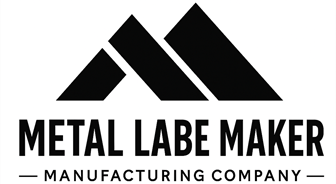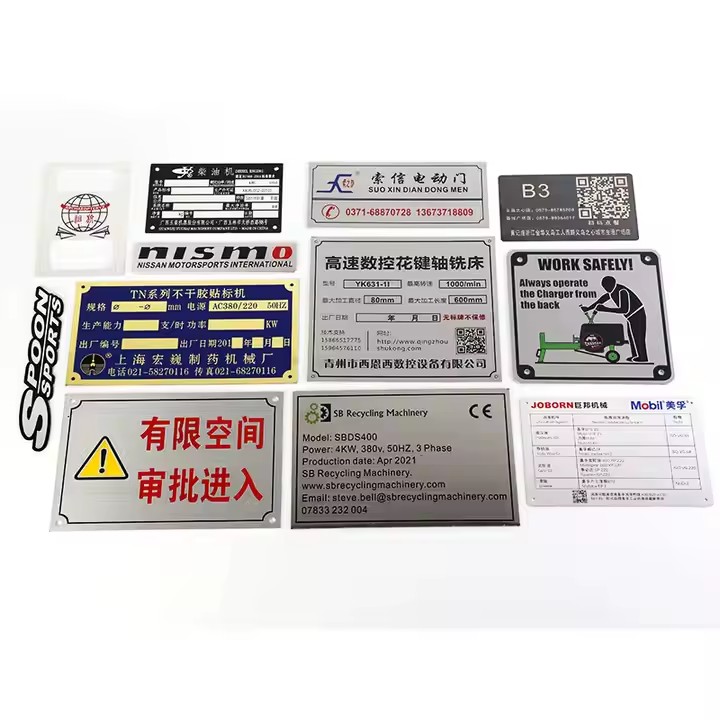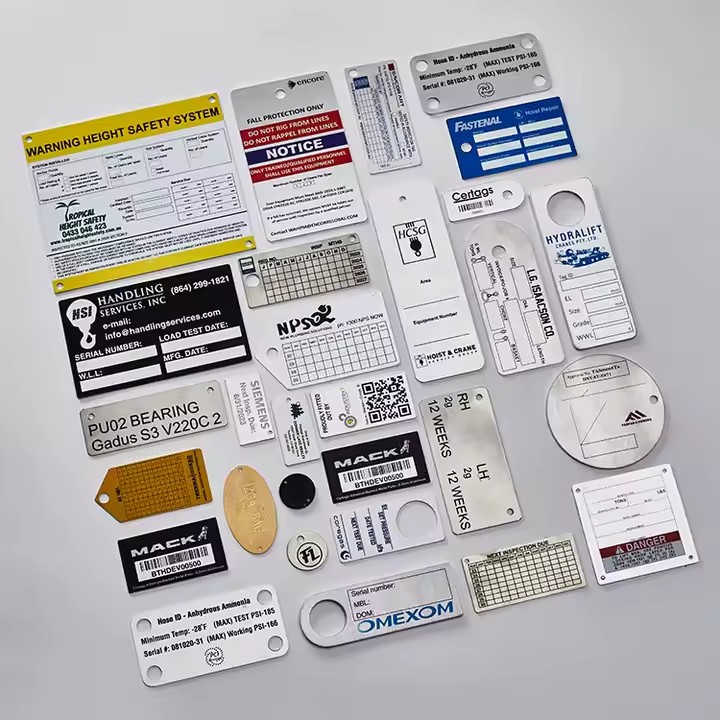Common Metal Label Processes: Etching, Stamping, Screen Printing, Anodizing & More
When it comes to creating custom metal labels, the manufacturing process plays a key role in determining the appearance, durability, cost, and functionality of the final product. Different processes offer unique benefits depending on the application—whether you need rugged industrial tags or high-end branding plates.
This guide explores the most common metal label fabrication methods, how they work, and what they’re best suited for.
1. Etching (Chemical or Laser)
Overview:
Etching involves removing material from the surface of the metal to create permanent markings. It can be done through chemical etching or laser etching.
Key Features:
-
Produces high-precision, long-lasting designs
-
Ideal for small text, logos, barcodes, and serial numbers
-
Can be color-filled for enhanced visibility
Best For:
-
Industrial equipment labels
-
Machine-readable codes
-
High-detail branding
Pros:
-
Permanent and corrosion-resistant
-
High-resolution details
2. Stamping / Embossing / Debossing
Overview:
Stamping uses a die to press into or raise the metal surface, creating a 3D design (either embossed or debossed).
Key Features:
-
Creates texture and tactile feedback
-
Adds a premium look and feel
-
No ink involved – purely mechanical
Best For:
-
Nameplates
-
Decorative tags
-
Product branding
Pros:
-
Highly durable
-
Tamper-resistant
-
Professional appearance
3. Screen Printing
Overview:
Screen printing applies ink onto the metal surface through a mesh stencil. It’s ideal for colorful graphics or high-contrast labels.
Key Features:
-
Can print multiple colors
-
Cost-effective for large quantities
-
Works best on smooth surfaces
Best For:
-
Product labels
-
Instructional plates
-
Decorative branding
Pros:
-
Great for bold logos and visuals
-
Quick turnaround for bulk production
Cons:
-
Less durable than etched or stamped designs
-
Ink may fade over time in harsh environments
4. Anodizing (Mainly for Aluminum)
Overview:
Anodizing is an electrochemical process that increases the oxide layer on aluminum, enhancing corrosion resistance and allowing color to be added.
Key Features:
-
Makes aluminum harder and more durable
-
Enables vibrant and fade-resistant color options
-
Can be combined with laser marking
Best For:
-
Outdoor tags
-
Color-coded identification plates
-
Decorative aluminum panels
Pros:
-
UV and corrosion-resistant
-
Color integrated into the material (not just surface-printed)
5. Engraving (Mechanical)
Overview:
Mechanical engraving uses cutting tools to carve into the metal. It offers deep, long-lasting marks.
Best For:
-
Serial number plates
-
Control panel nameplates
-
Utility and asset tags
Pros:
-
Excellent for deep, readable markings
-
Works well on thick metal surfaces
6. UV Printing / Digital Printing
Overview:
UV printing uses ultraviolet light to instantly cure ink on metal surfaces, making it possible to print detailed images directly onto metal.
Best For:
-
Full-color designs
-
Indoor signage
-
Low-abrasion environments
Pros:
-
High-resolution prints
-
Short lead time
-
Customizable in small runs
Cons:
-
Not as durable as other methods for outdoor or industrial use
7. Die-Cutting and Laser Cutting
Overview:
These processes shape the metal labels into custom sizes and forms using mechanical dies or high-precision lasers.
Best For:
-
Unique shapes
-
Custom holes or slots for mounting
-
Complex contours
Pros:
-
Accurate and clean edges
-
Allows for complex designs
Choosing the Right Process
When selecting a process for your metal labels, consider:
-
Environment: Will the label face chemicals, abrasion, or UV exposure?
-
Appearance: Do you need a colorful finish or a professional metallic look?
-
Quantity & Budget: Some methods are better for small runs (laser engraving), while others are suited for mass production (screen printing).
-
Lifespan: Choose permanent processes like etching or stamping for long-term applications.
Conclusion
Understanding the different metal label production processes can help you choose the most effective, durable, and cost-efficient solution for your project. Whether you need chemically etched industrial plates or screen-printed branding tags, each method offers unique advantages.
Still not sure which process is right for you? Contact us—our team of experts can guide you through your options based on your design, environment, and application needs.







